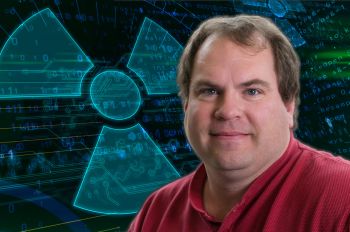Now Artificial Intelligence Is Headed Into Another New Territory: High-Performance Computing

Artificial intelligence is a powerful tool that can help scientists and engineers tackle complex and challenging computational problems, but running AI-enabled science on some of the most powerful computer systems is largely unexplored territory.
A team of researchers from Illinois Institute of Technology that includes Zhiling Lan, professor of computer science; Stefan Muller, Gladwin Development Chair Assistant Professor of Computer Science; and Romit Maulik, research assistant professor of applied mathematics, was awarded a National Science Foundation grant to test key features essential for a scalable, energy-efficient high-performance computing (HPC) environment for AI-enabled science on heterogeneous systems.
Lan says the goal is to build a layered HPC architecture to construct an environment suitable for AI-enabled science.
“We will test an AI-enabled target scientific application, an incompressible fluid flow simulation using OpenFOAM, on the state-of-the-art platform Polaris at Argonne National Laboratory,” Lan says. “Our planning research tasks include algorithm development, programming models, dynamic runtime support, and energy efficiency tradeoffs.”
Lan says most AI-enabled science research mainly addresses the problem at the application level. HPC efficiency can be enhanced by using a heterogeneous system of central processing units (CPUs), graphics processing units (GPUs), and AI accelerators.
“To date, research on AI-enabled science has mainly focused on canonical experiments without any serious consideration of scale, energy efficiency, or dynamic mapping to resources,” she says. “Little effort has been done to explore trade-offs among performance, accuracy, scaling, and energy efficiency for AI-enabled science.”
This is due, in part, to the lack of availability of heterogeneous platforms with various configurable settings. Polaris is a new heterogeneous CPU-GPU system deployed at Argonne Leadership Computing Facility (ALCF), which is also connected to an AI accelerator assessment testbed at ALCF. Together, these features provide a unique platform for the research.
“As the complexity of AI-enabled HPC ecosystems of hardware stacks, software stacks, and applications continues to rise, achieving optimal performance is a major challenge,” Lan says. “The number of tunable parameters a user can configure has increased significantly, resulting in the overall parameter space growing dramatically. Exhaustively evaluating all parameter combinations becomes very time consuming. Therefore, autotuning for automatic exploration of parameter space is desirable.”
The team includes researchers Valerie Taylor, director of the Mathematics and Computer Science Division of Argonne; Xingfu Wu, staff scientist at Argonne National Laboratory and the University of Chicago; and Mike Papka, Presidential Research, Scholarship, and Artistry Professor at Northern Illinois University and senior scientist at Argonne. After testing the application, the team envisions developing SEEr, a scalable, energy-efficient HPC environment for scaling up and accelerating AI-enabled science for scientific discovery.
“I’m excited about building bridges between more theoretical work in my research area of programming languages and the exciting work being done in practice by the groups at Illinois Tech and Argonne,” Muller says. “I think our disciplines have a lot to offer each other. Programming languages and compilers can give insights into code long before it’s actually run that I hope will be useful in making decisions about how to run it, and I believe that the theoretical research in these areas can also benefit from insights into the needs and applications of high-performance computing.”
Maulik says no one has really studied the comprehensive effectiveness of surrogate modeling for a large problem that includes energy consumption, return on time, and compute investments.
“At the very least, our studies will tell the world that a project needs to account for these costs before jumping headlong into something based on deep learning,” he says. “I have been searching for answers to such questions for quite some time myself, and I am excited to work with the phenomenal members of this team to make further progress.”
The opinions, findings, and conclusions, or recommendations expressed are those of the researcher(s) and do not necessarily reflect the views of the National Science Foundation.
Photo: Professor of Computer Science Zhiling Lan




